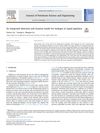Predictive Modeling of Drug Response and Mechanism of Action in Alopecia Areata Clinical Trials
TLDR Researchers found three different ways drugs work to treat hair loss from alopecia areata and identified key factors for personalized treatment.
The study focused on alopecia areata (AA), an autoimmune disease causing hair loss, and explored the molecular mechanisms behind drug responses in clinical trials. Researchers identified JAK/STAT and T cell costimulatory pathways as key targets and analyzed the molecular responses to three drugs: tofacitinib, ruxolitinib, and abatacept. By using RNAseq data from scalp biopsies and reverse-engineered regulatory networks, they modeled the mechanisms of action for these drugs. The study found distinct molecular mechanisms for each drug, which could be captured by a small number of transcription factors. This systems biology approach aimed to enhance precision medicine strategies, allowing for better treatment selection based on individual molecular pathology.




